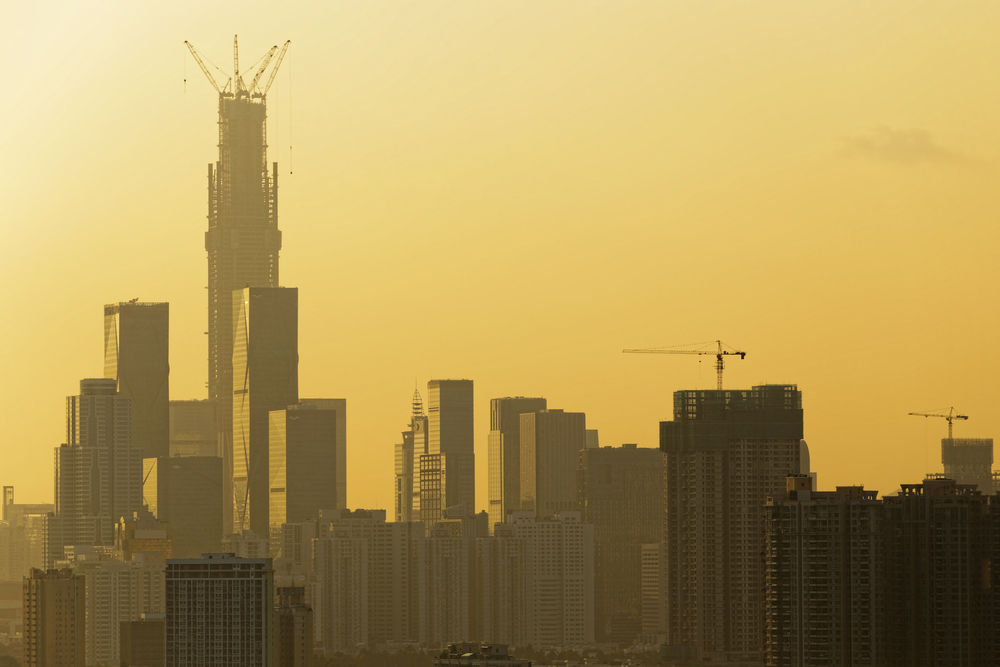Emissions Reduction Target in the NYC Green New Deal: Does It Affect My Building?

In recent years, New York City has been characterized for taking the lead in green construction and renewable energy. On April 2018, the city council published a new law to reduce building emissions as part of the NYC Green New Deal. It has the most ambitious goals among similar laws worldwide, and the bill is part of a larger effort to reduce NYC emissions by 80% by 2050.
Greenhouse gas emissions are often associated with transportation, but the measured data tells a different story. Transportation in NYC accounts for 15.5 million metric tons of CO2 equivalent, while buildings have a much higher footprint of 34.6 million tons. In other words, local building emissions are over 120% higher than transportation emissions.
Back in 2009, the Greener Greater Buildings Plan introduced the NYC Energy Code and the Benchmarking Law, among other legislation focusing on green construction. The Benchmarking Law originally required energy and water use reports for buildings above 50,000 square feet, on a yearly basis. The threshold was then lowered to 25,000 sq.ft., and the recent emissions law will now apply for all benchmarked buildings.
Reduce your building's energy costs and greenhouse gas emissions.
Requirements of the Building Emissions Law
The NYC Green New Deal sets emissions limits that will become more stringent over time, and they will be established separately for each type of property. The first emissions limit comes into effect in 2024, and a more stringent limit will be published in 2030. Although the individual requirements vary depending on the building type, the citywide emissions reduction target is 40% by 2030.
Just like the benchmarking law, the emissions law applies for properties over 25,000 sq.ft., which represent around 60% of floor area in NYC. Around 50,000 buildings are covered, which are 59% residential and 41% commercial. To oversee compliance of the emissions law, the NYC Department of Buildings will have a new division: the Office of Building Energy and Emissions Performance.
Since the difficulty of reducing emissions changes for each property, the law provides alternative compliance options:
- Purchasing renewable energy credits is also valid, as long as the generation system producing those credits supplies power to NYC.
- Property owners can also purchase emission offsets, but this approach can only be used for 10% of the building’s target.
- A feasibility study for a carbon trading plan will be carried out. When this option becomes available, building owners who reduce emissions below the limit earn credits, which can be sold to others who are still above the limit.
Since the new law is based on emissions per square foot, many high-performance buildings will below the limit without additional upgrades. According to the Urban Green Council, the 2024 emissions limits will affect 20% of the buildings covered by the law, and the 2030 limits will affect 75% of them.
The law is even more stringent for government-owned buildings, since the emissions reduction targets are larger: 40% by 2025 and 50% by 2030.
Penalties for Missing the Emissions Reduction Targets
Buildings subject to the new emissions law will be required to file a report on May 1st starting from 2025. The penalties for non-compliance are the following:
- If the emissions limit is exceeded, the penalty is $268 for every ton of emissions above the limit.
- If the report is not submitted on time, the monthly penalty is $0.50 per sq.ft.
- If the building owner lies in the report, it is considered a misdemeanor and there is a hefty penalty of $500,000.
For example, the 2024 emissions limit for multifamily buildings is 6.75 kg CO2 eq. per sq.ft. An apartment building with an area of 36,000 sq.ft. would have emissions limit of 243 tons.
- If the measured emissions add up 275 tons, the building is 32 tons over the limit and the penalty is $8,576.
- In case the report is not filed, the penalty is $18,000 per month.
Reducing Emissions in the Affordable Housing Sector
Since the affordable housing sector charges much lower rental rates, there is less capital available to improve buildings. To account for this limitation, these properties will not be subject to a specific emissions limit under the NYC Green New Deal. Instead, these buildings will reduce emissions with low-cost measures that are presented as prescriptive requirements.
The carbon trading program could be designed to offer additional benefits in the low-income housing sector. Among the proposed benefits is an increased accumulation of credits for carbon reductions in low-income housing. This would provide additional rewards for reducing emissions, improving the financial performance of building upgrades.
The emissions law also has less stringent requirements for houses of worship and healthcare.
Conclusion
The new emissions law may seem like a burden for building owners at first, but consider the energy savings achieved in the process. By getting an energy audit, building owners can prioritize the measures with the shortest payback period and the highest return on investment.
The outlook is even better when property owners have access to low-interest financing, since the energy savings often exceed the debt payments. The building upgrade project essentially pays itself, while leaving net savings from the first year.

Michael Tobias
Michael Tobias, the Founding Principal of NY Engineers, currently leads a team of 50+ MEP/FP engineers and has led over 1,000 projects in the US
Join 15,000+ Fellow Architects and Contractors
Get expert engineering tips straight to your inbox. Subscribe to the NY Engineers Blog below.



